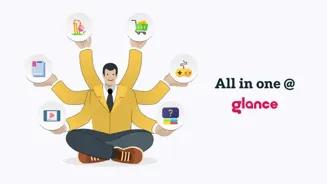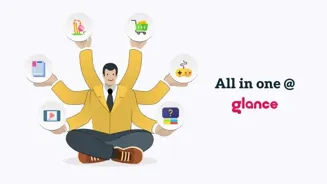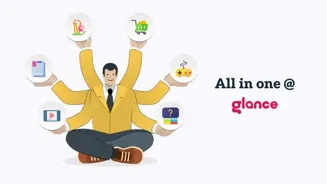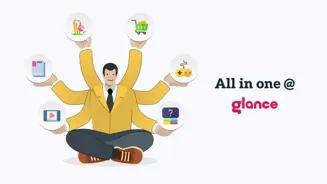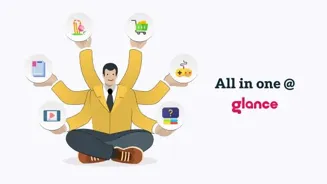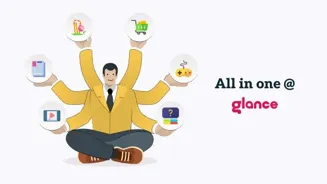Unlock the power of effective team communication! Dive into 8 key techniques for better collaboration
In today's fast-paced work environment, especially in India where teams often span across diverse backgrounds
and work styles, effective communication is the bedrock of successful projects and a thriving workplace.
When team members communicate clearly, understand each other, and work towards a shared vision, productivity soars, conflicts are minimized, and innovation flourishes. However, communication breakdowns can lead to misunderstandings, delays, frustration, and ultimately, project failures.
So, how do we cultivate a culture of open and effective communication within our teams? Let's explore eight powerful techniques that can significantly enhance collaboration and drive positive results.
Active Listening: More Than Just Hearing
Active listening is arguably the most crucial communication skill, often sidelined. This means truly focusing on the speaker, understanding their message, and responding thoughtfully, not just waiting for your turn to talk.
In a team setup, active listening involves giving your full attention to the person speaking, making eye contact (if culturally appropriate), nodding to show you're engaged, and avoiding interruptions.
Paraphrase what they've said to confirm your understanding, using phrases like, "So, if I understand correctly, you're saying..." or "Are you suggesting...". This not only ensures you've grasped the essence of their message but also demonstrates respect and encourages open dialogue.
In diverse Indian teams, active listening helps bridge cultural nuances and different communication styles, fostering a more inclusive and collaborative atmosphere.
Clear and Concise Messaging: Say What You Mean
Ambiguity can be a project's worst enemy. When communicating, be as clear and concise as possible, avoiding jargon or technical terms that your audience may not understand. Structure your thoughts logically and present them in a way that's easy to follow.
Instead of saying, "We need to optimize the deliverables," try, "Let's find ways to improve the project's output so that it will be achieved in time." When assigning tasks, be precise about expectations, deadlines, and resources needed.
In our context, we encounter people who have a problem following simple instructions. It is very important to make it clear to everyone. Being clear and concise minimizes misunderstandings, saves time, and ensures everyone is on the same page. Writing skills are extremely important.
Make sure your sentence structure is correct and you use the correct verb tense.
Choosing the Right Communication Channel: A Medium for Every Message
Not every communication needs to be an email, and not every discussion requires a meeting. Choosing the right communication channel for the message is essential for efficiency. For quick updates or simple questions, instant messaging or a quick phone call might suffice.
For more complex discussions, a face-to-face meeting or a video conference can be more effective. Emails are best suited for formal communication, documentation, and sharing important information that needs to be easily referenced later.
Consider the urgency of the message and the recipient's preferences when selecting a channel to avoid delays and ensure your message is received and understood promptly. Choosing wisely is very important. Don't use too many emojis in official communication.
Providing Constructive Feedback: Building, Not Breaking
Feedback is crucial for growth and improvement but delivering it effectively is an art. Focus on specific behaviors and outcomes rather than personal attacks. Frame your feedback in a positive and supportive manner, highlighting areas of strength and offering suggestions for improvement.
Use the "sandwich" method – start with a positive comment, then deliver the constructive criticism, and end with another positive remark. For example, instead of saying "Your presentation was terrible," try, "I appreciate your effort in putting together the presentation.
While the content was good, perhaps you could work on your delivery and visual aids to make it more engaging. Overall, your research was excellent". Regular feedback, both positive and constructive, fosters a culture of continuous learning and improvement within the team.
Embrace Transparency and Openness: No Secrets Allowed
Transparency builds trust and strengthens team bonds. Share information openly and honestly with your team, keeping them informed about project progress, challenges, and decisions.
Encourage open dialogue and create a safe space for team members to voice their opinions and concerns without fear of judgment or reprisal. When everyone is in the loop, it enhances collaboration, reduces rumors, and fosters a sense of ownership and shared responsibility.
Promote a culture of openness by actively seeking input from team members and being responsive to their queries. People should know what is going on, and what needs to be done.
Conflict Resolution: Turning Disagreements into Opportunities
Conflicts are inevitable in any team setting, but how you manage those conflicts can make or break the team. Don't avoid conflict; address it head-on in a constructive manner. Encourage open communication and active listening to understand all perspectives.
Facilitate a discussion where team members can express their concerns and work together to find mutually agreeable solutions. Focus on the issue at hand, not personalities and strive for win-win outcomes. If necessary, involve a neutral third party to mediate the situation.
Effective conflict resolution not only resolves immediate issues but also strengthens team cohesion and trust in the long run.
Utilizing Collaboration Tools: Tech to the Rescue
In today's digital age, a plethora of collaboration tools are available to facilitate communication and teamwork. Project management software like Asana, Trello, and Jira can help teams track progress, assign tasks, and manage deadlines effectively.
Communication platforms like Slack, Microsoft Teams, or cloud-based document sharing tools can simply our communication. Make sure every one is using the tools correctly. Choose tools that are user-friendly and cater to your team's specific needs.
Regularly train team members on how to use these tools effectively to maximize their benefits.
Establish Clear Communication Protocols: Setting the Rules of Engagement
Establish clear communication protocols and guidelines to avoid confusion and ensure consistency. Define preferred communication channels for different types of messages, set response time expectations, and agree on meeting etiquette.
For instance, you might decide that all project updates should be shared via email, while urgent issues should be addressed via phone. Communicate these protocols clearly to all team members and reinforce them regularly.
A well-defined communication framework fosters a more organized and efficient work environment.
AI Generated Content. Glance/InMobi shall have no liability for the content